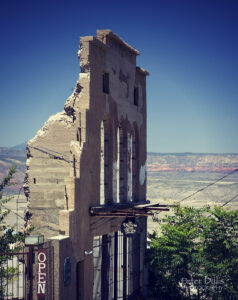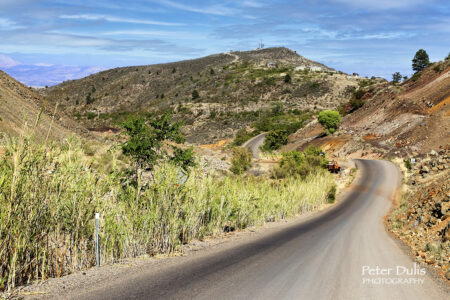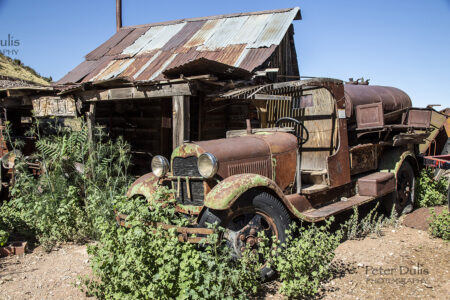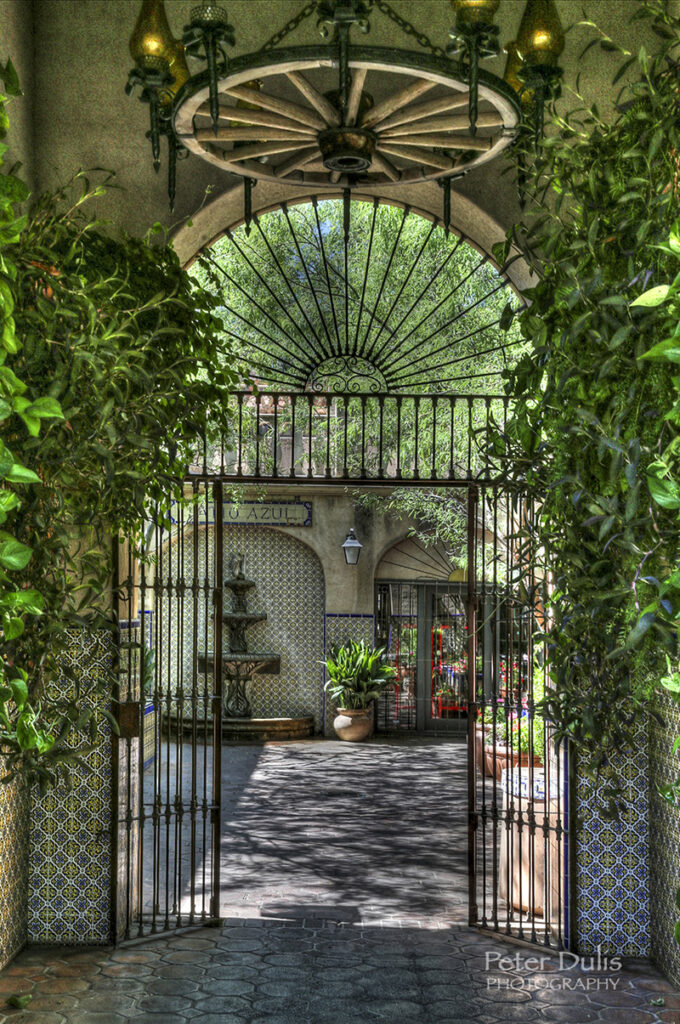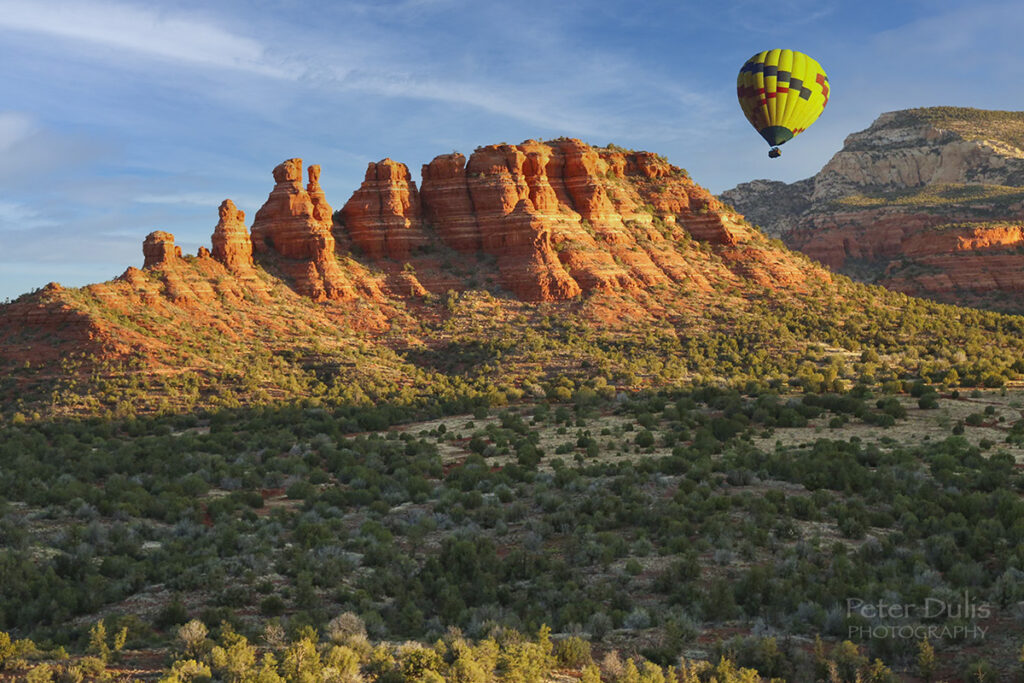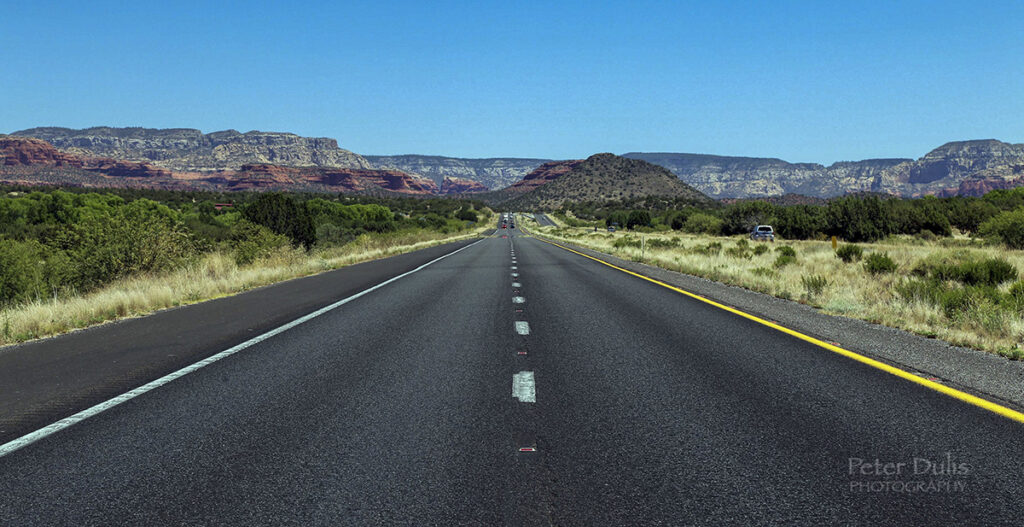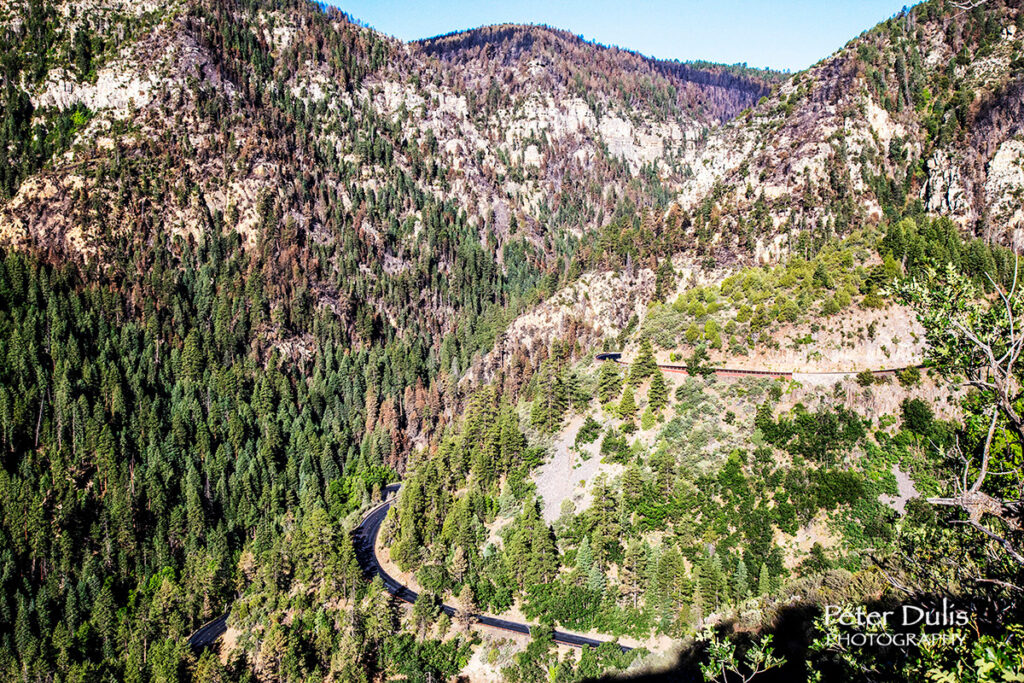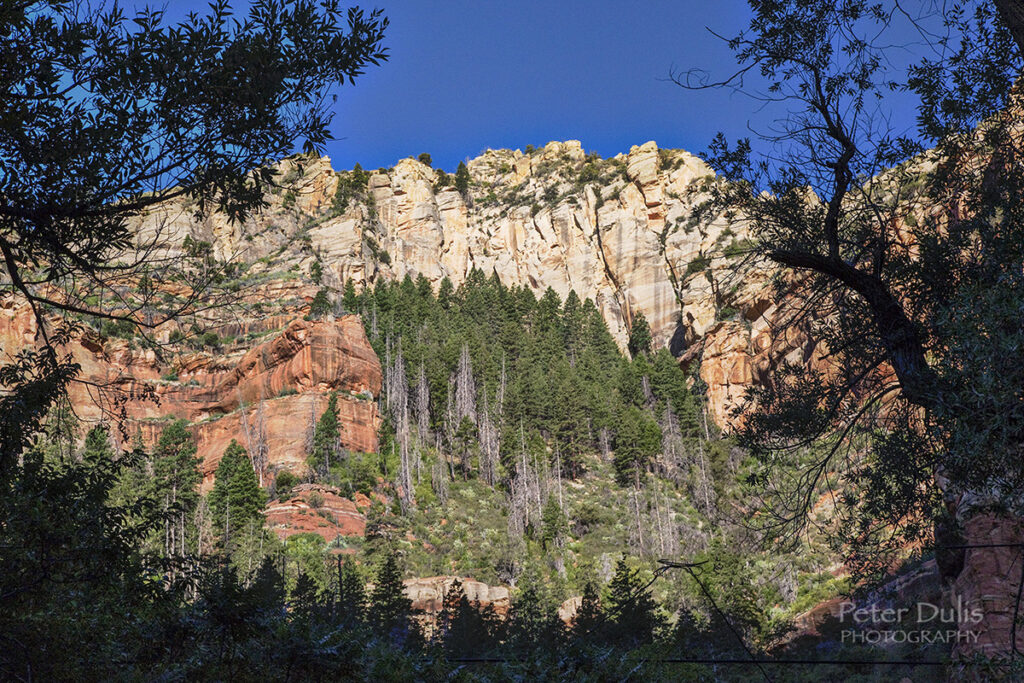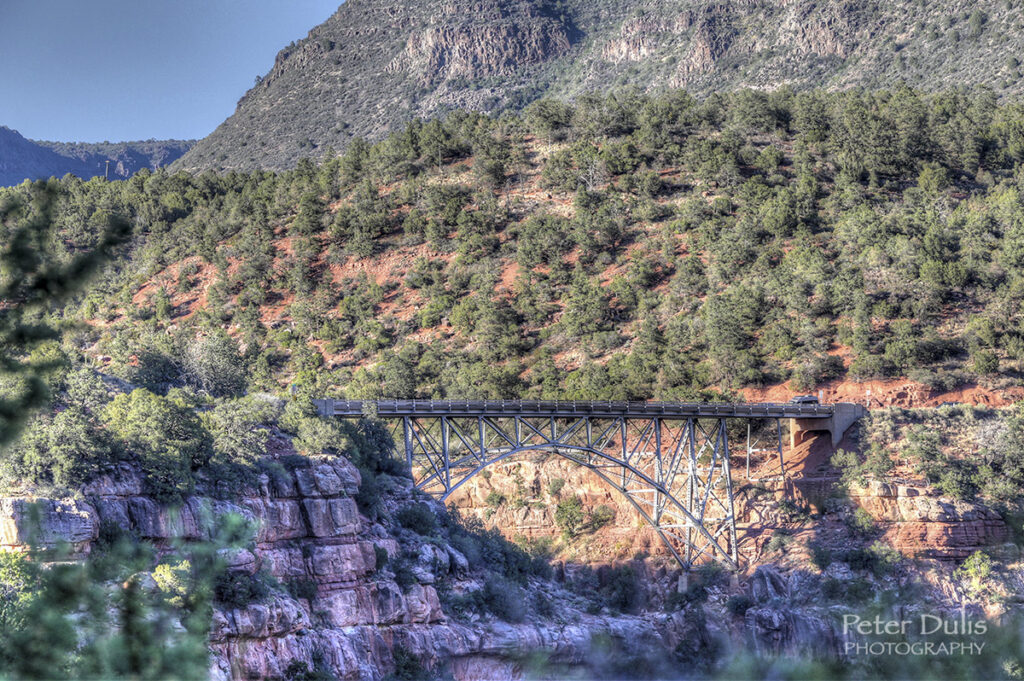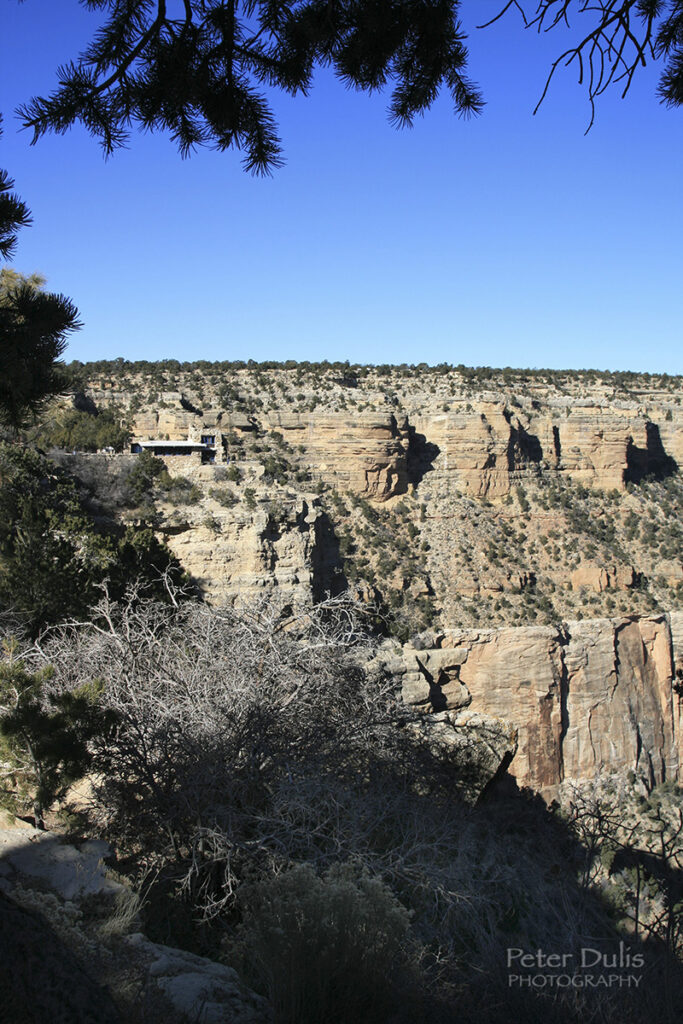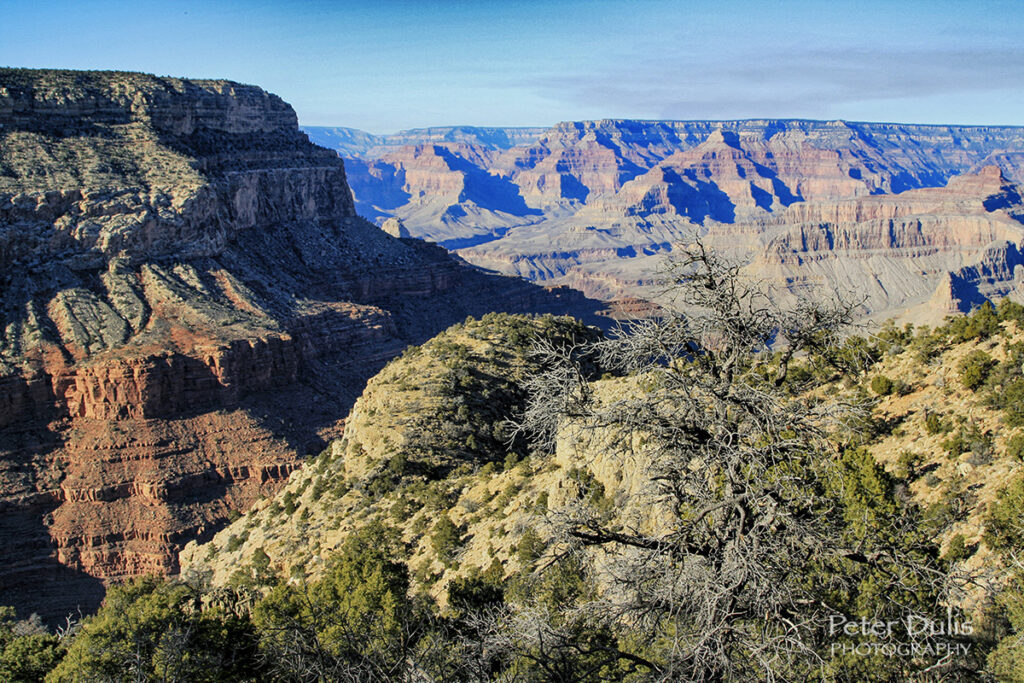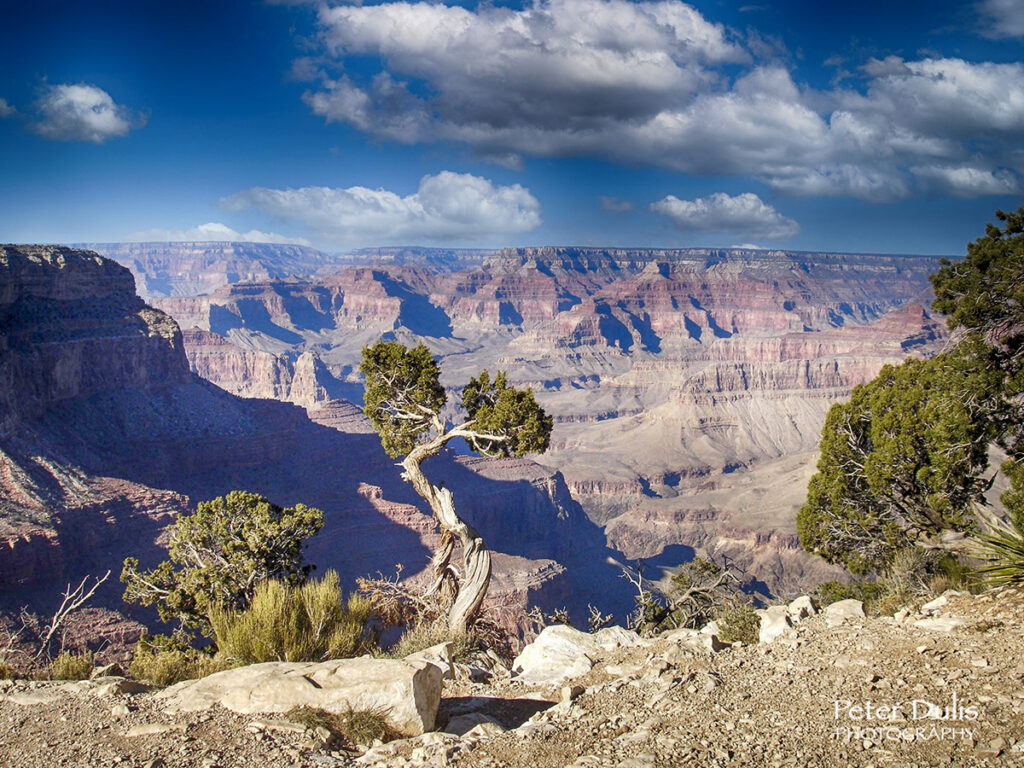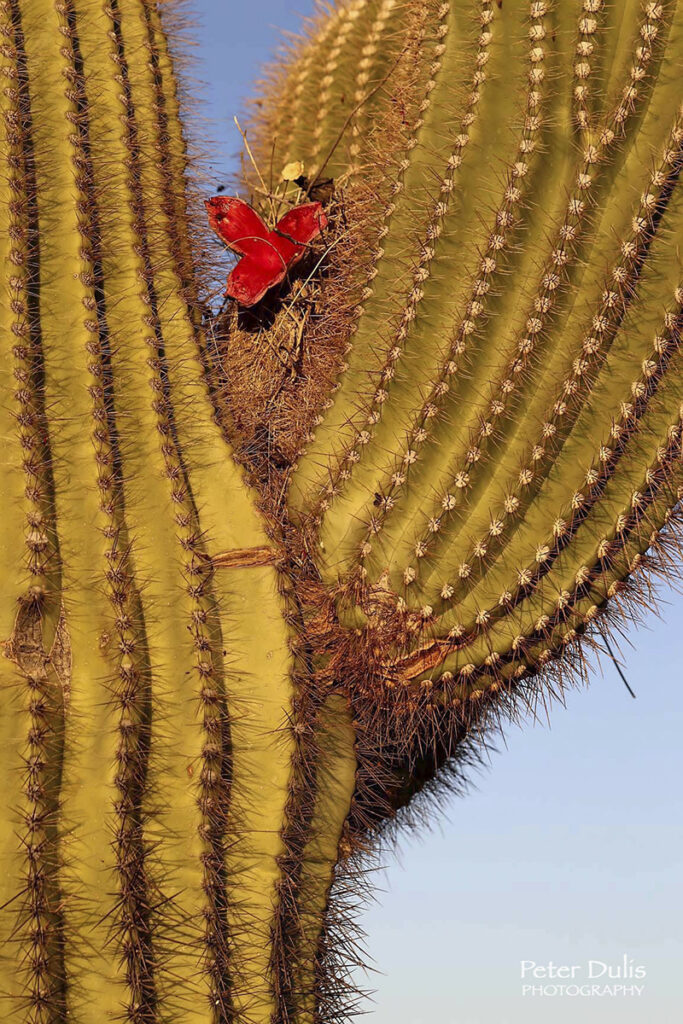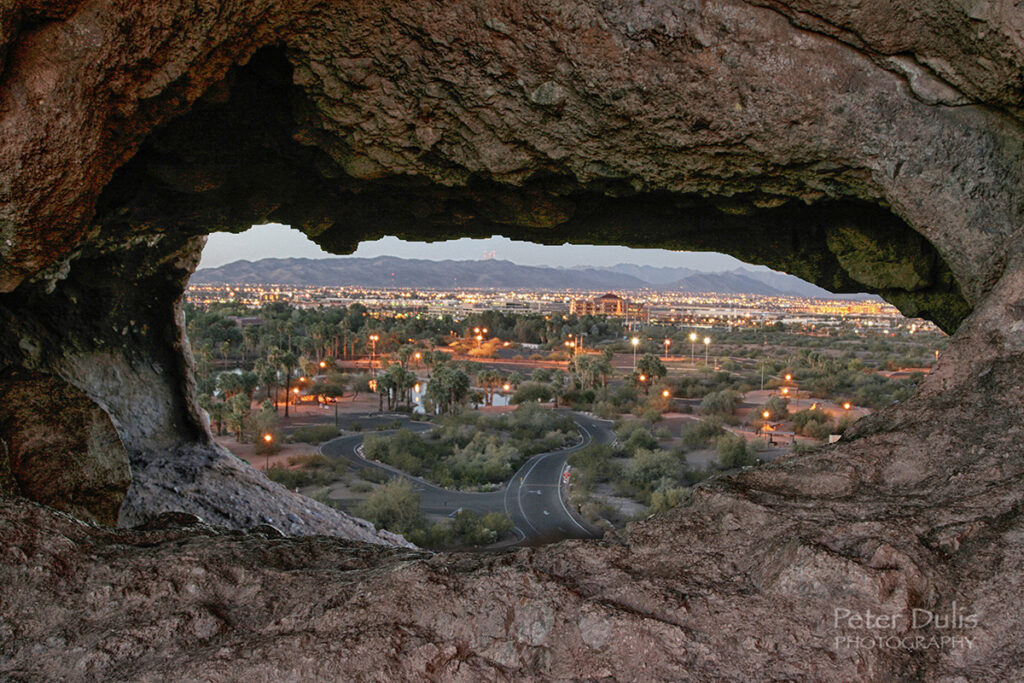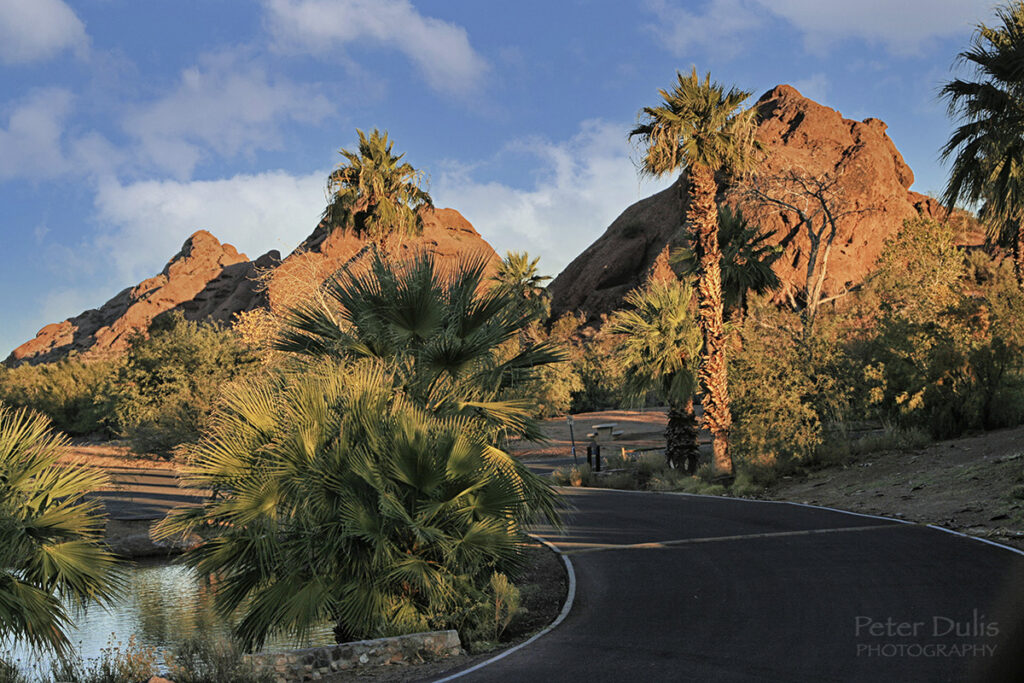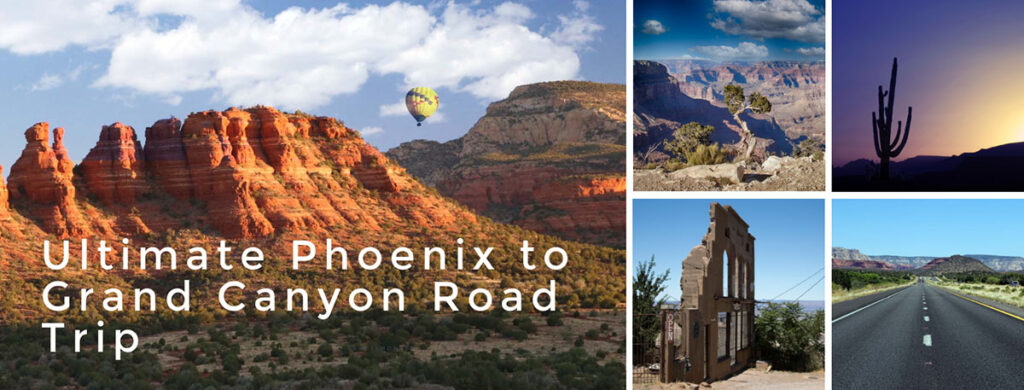
If you have never traveled to Arizona, this road trip is a great way to take in some amazing scenery. Living in Canada, we flew to Phoenix, AZ to start the trip. We rented a car and away we went.
If you were to drive straight from Phoenix to the Grand Canyon, the distance is about 229 miles or about a 4-hour non-stop drive without traffic. The best way to see this landscape is to break it up and stay at least a night or two at each of the following locations, which we will highlight.
After we landed in Phoenix and grabbed a car we headed straight to the town of Jerome, AZ for our first stop.
Jerome, AZ
Jerome is about two hours north of Phoenix, and the drive passes through some of central Arizona’s most striking landscapes, filled with massive Saguaro cacti that flank the highway. As you drive north you go through some amazing changes in elevation and scenery.
Jerome is a little town nestled on the side of a steep hill overlooking the Verde Valley. Sedona was only 2 hours away, so we spent about 4 hours here before moving on to Sedona. Built in 1916 by a mining magnate, Jerome was one of many old copper mining towns in Arizona. Like many of the mining towns in AZ, Jerome fell on hard times and the mine closed in the 1950s.
After walking around town for a while, I really wanted to visit the Gold King Mine and Ghost Town, just outside of Jerome. If you like photographing old cars and trucks, this is your place. The property is filled with more than 180 vintage cars, trucks, and motorcycles, including Studebakers and Harleys. There is mining equipment, historic buildings and a Stamp Mill that was used for crushing the ore. An endless range of things to photograph!
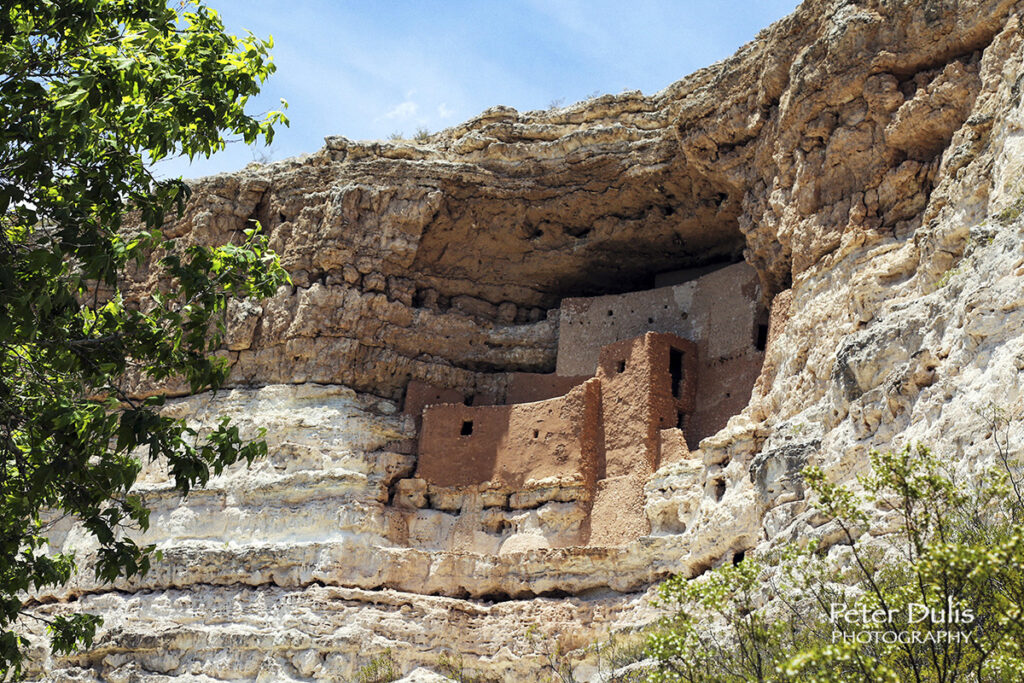
Montezuma Castle National Monument
Montezuma’s Castle was only a 45-minute drive from Jerome as we headed north towards Sedona. Montezuma’s Castle is considered to be one of Arizona’s best-preserved cliff dwellings, built somewhere between 1100 and 1350 A.D. by the Sinagua Indians. This historic five-story Native American dwelling is carved out of an ancient limestone cliff and includes twenty rooms.
There are some nice trails to explore here, and a museum with artifacts.
In 1906, President Theodore Roosevelt declared Montezuma Castle and its surrounding 840 acres one of America’s first National Monuments, guaranteeing its ongoing protection – but looters had been there long before this. The first restoration effort took place in 1933 to repair damage caused by looters. This effort to repair and preserve Montezuma’s Castle was no easy task!
The photo was taken with a 24-105mm lens, in AV mode at 1/320 second, f/9 with an ISO setting of 400.
Sedona, Arizona
Sedona is one of Arizona’s most beautiful destinations.
Many people come to hike the Sedona vortexes. These iconic rock formations are believed to be the source of some of the most special energy centres in the world. People travel from all across the globe to experience the mysterious cosmic forces that are said to emanate from the red rocks.
If you venture to Sedona, make sure you get up to the Airport Mesa to explore one of the vortexes, and if you get there by sunset, the view from the top is incredible.
Sedona is a designated Dark Sky Community. So, if you are into nighttime photography, you’ll be blown away!
We took a guided Pink Jeep Scenic Rim tour that took us up Schnebly Hill Road to enjoy breathless views, cliffs, and rock formations. The photography from the top was incredible.
Besides driving around to take in the sites, make sure you visit Tlaquepaque Arts & Shopping Village. This is an outdoor market featuring art galleries, craft shops, cobblestone paths and decorative arches. Great photo opps abound, and the shopping experience is quite unique.
Oak Creek Canyon Scenic Drive
While driving from Sedona to Flagstone, take the Oak Creek Canyon Scenic drive. This 30-mile excursion from Sedona to Flagstaff is a wonderful scenic trip that has many stops and photo opportunities along the way.
Rand-McNally named Highway 89 one of the “Top Most Scenic Drives in America”. Its panoramic road takes you through Oak Creek Canyon and offers breathtaking views as the road climbs upwards towards Flagstaff.
Slide Rock State Park is a popular water recreation spot in the summer, and you can swim in the crystal-clear water of Oak Creek. The drive’s famous switchbacks begin 14 miles in, just after you cross Pumphouse Wash. If you are like me, you’ll be stopping every 2 minutes to take another photo. Whatever you choose to do along the way, the scenic drive from Sedona to Flagstaff will be a memorable one.
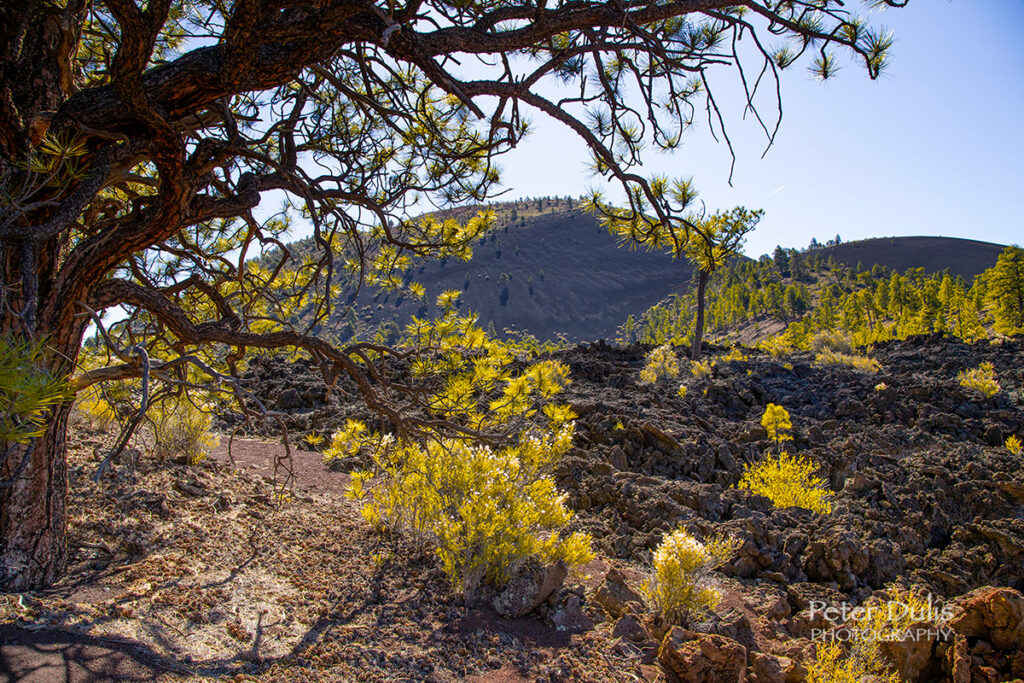
Flagstaff – Sunset Crater Volcano National Monument
The City of Flagstaff is comprised of just over 64 square miles, nestled at the base of the San Francisco Peaks. It is surrounded by one of the largest pine forests on earth. At nearly 7,000 feet, Flagstaff is also one of the highest elevation cities in the United States. Sunset Crater is the place to visit here.
Located in the south part of the San Francisco Volcanic Field, Flagstaff’s horizon is layered with volcanoes. They have all been dormant for quite a while, with Sunset Crater last erupting nearly 1,000 years ago, and now protected as a national monument. Hiking around the volcano, which is covered by black cinders, will provide lots of photo opportunities as you witness the plant growth on the black volcanic rock.
The mile-long Lava Flow Trail offers a close-up view of different geological features of the lava bed surrounding Sunset Crater.
This photo was taken with a 24-105mm lens, in AV mode at 1/160 second, f/10 with an ISO setting of 320.
Grand Canyon National Park
I still remember the first time I visited the edge of the Grand Canyon south rim. I stood beside another person who had just arrived, and they said “now I know what the word awesome means” – and they were right! Once you stand close to the edge of the rim, you can’t help but be blown away by its sheer size and beauty. The Grand Canyon South Rim is the most popular area not only for its beautiful views, but for its abundance of visitor services and family-oriented activities. At 7,000′ feet above sea level, the Grand Canyon is considered one of the seven natural wonders of the world. There are many scenic viewpoints around the canyon, so do your homework, and you won’t be disappointed.
Iconic Phoenix
Finally, the day had come, and we were headed back to Phoenix to catch our flight home. Phoenix is known for its outstanding hotel resorts, with elaborate pools, desert gardens, and lots of golf courses!
There is no shortage of photo opportunities in the Phoenix area. Camelback Mountain is a unique Arizona landmark that can be seen from across the Valley. Pinnacle Peak Park (located in the suburb of Scottsdale) is a great place to explore. It features a moderate out-and-back trail with a total distance of 3.5 miles, winding through the pristine Sonoran Desert environment. The Desert Botanical Garden is a 140-acre botanical garden located in Papago park which provides lot of photo opportunities.
We hope you enjoyed our photo adventures to Arizona, and that you will stay in touch with us through our website – www.PhotographyAdventures.ca
ABOUT THE AUTHOR
Peter Dulis is a Canadian photographer and visual storyteller living in Toronto, Ontario. His work has been published in a number of magazines such as Graphic Arts Magazine, Visual Wilderness, Luminous Landscape, and Photo News. Peter has been recognized for photographic excellence. “I’ve had the chance to meet and work with some incredible people in the industry. Photography isn’t just about making photographs; it’s about choosing a life of curiosity, exploration, and wonder, immersing yourself in the world around you.”
Peter shares many of his tips and techniques in his monthly newsletter: https://photographyadventures.ca/newsletter-sign-up/



